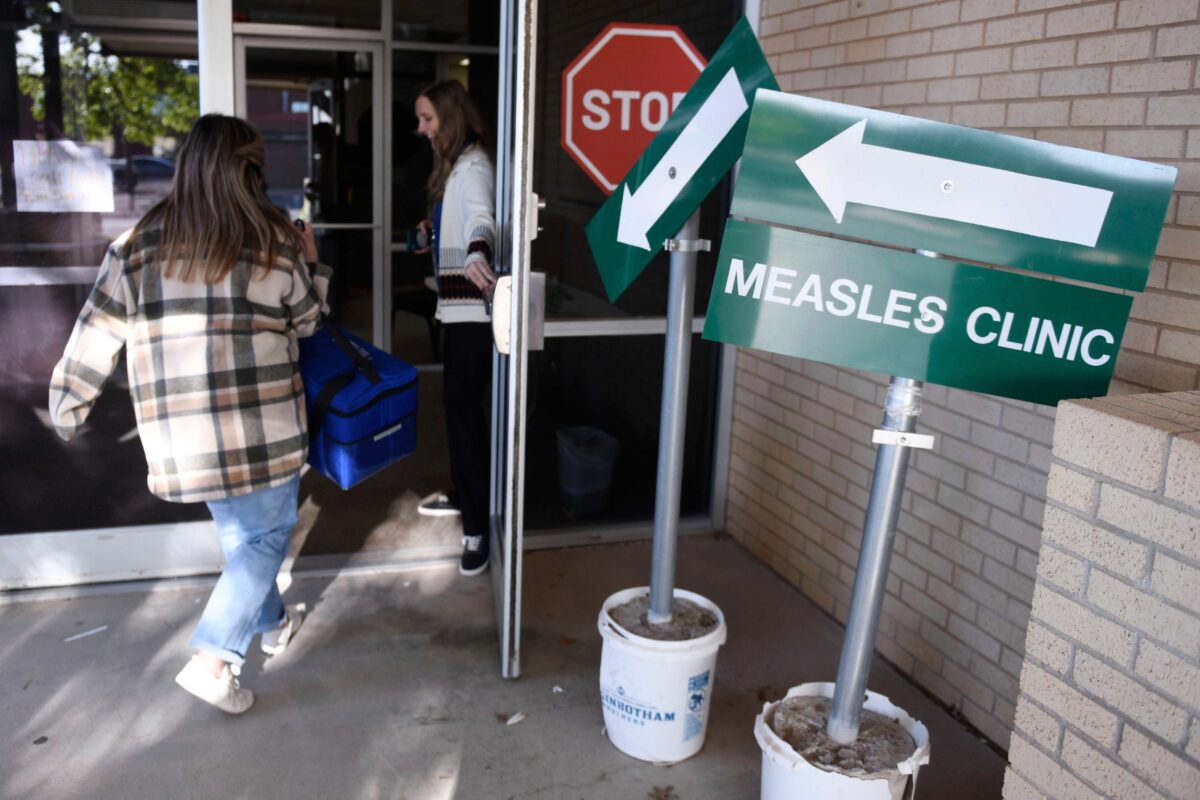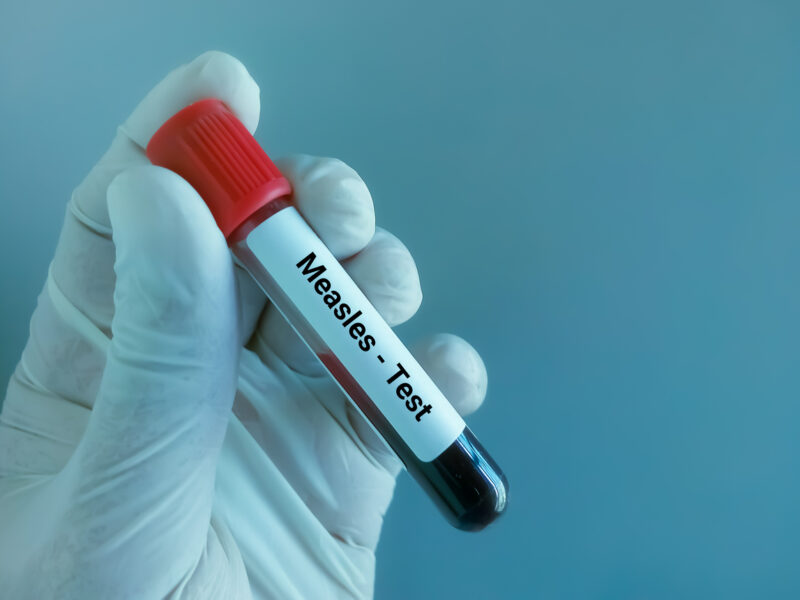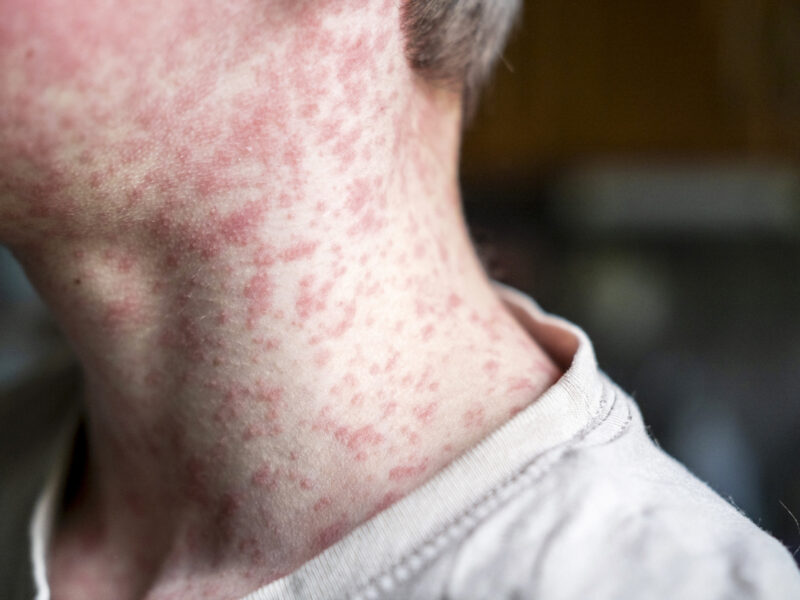Overview:
-Health experts caution that without improved vaccination efforts, measles could become endemic in the U.S., potentially leading to 850,000 cases over the next 25 years.
-Measles is one of the most contagious infections ever identified. One person with measles can spread the infection to 12 to 18 others.
-An April study found that boosting community vaccination rates by 5% would tamp down the increase in cases to between 3,000 and 19,000 over the next 25 years.
By REBECCA SCHEIN
Michigan State University
Globally, measles is on the rise across the U.S., Canada, Mexico, South America and parts of Europe. In 2025, North and South America saw 11 times more cases than during the same period last year. In Europe, measles rates are at their highest point in 25 years.
In the U.S., as of May 2, 2025, health authorities have confirmed 935 cases of measles affecting 30 states. This is a huge surge compared with the 285 cases reported in 2024. A large measles outbreak is happening in Canada, too, with over 1,000 cases.
The Conversation asked Rebecca Schein, a specialist in pediatric infectious diseases, to explain what this spike at home and abroad might mean for a disease that was declared eliminated from the U.S. in 2000.
How do measles cases this year compare with previous years?
From 2000 to 2010, less than 100 measles cases were reported each year in the U.S. Since 2010, there have been isolated outbreaks, mainly in unvaccinated communities, with approximately 200 to 300 cases a year. The latest major outbreak in the U.S. was in 2019, with 1,274 cases, primarily in the New York City metropolitan area and parts of New Jersey.
Cases fell in 2020 to 2023 during the COVID-19 pandemic, returning to prepandemic levels in 2024. Currently, most U.S. cases are coming from an epidemic in Texas, with 702 confirmed cases as of May 6. Of these, 91 people were hospitalized and three people, two of them children, died. Measles cases are still being reported. Texas is one of 12 measles outbreaks documented in the U.S. in 2025 to date.
The World Health Organization has declared both North and South America to be at high risk for measles. Canada reported a total of 1,177 cases as of April 19, with 951 of them linked to an outbreak that began in New Brunswick in October 2024 and spread to seven provinces. In 2023, there were 12 measles cases in all of Canada.
Mexico reported 421 confirmed measles cases as of April 18, and another 384 cases are under investigation. There are also small measles outbreaks in South America, with Belize reporting its first two cases since 1991. Brazil reported five cases, and in Argentina there are 21 confirmed cases of measles, mainly in the capital city of Buenos Aires.
In Europe, measles cases rose tenfold, hitting 35,212 in 2024, according to the European Centre for Disease Prevention and Control.
How did the US eliminate measles?
Measles is one of the most contagious infections ever identified. One person with measles can spread the infection to 12 to 18 others. That number, which epidemiologists call R0, is 1 to 4 for the flu and 2 to 5 for COVID-19.
In 1912, measles became a nationally reportable disease tracked by all the health departments in the U.S. At that time, there were about 3 million to 4 million cases and 6,000 deaths each year in the country. Medical care improved and the death rate decreased, but cases spiked to epidemic levels every two to three years.
It was not until 1963, when the first measles vaccine became widely available, that cases dropped dramatically. The current measles vaccine, which is called the MMR vaccine because it also includes vaccines against mumps and rubella, was released in 1971. In 1977, the U.S. government launched the National Childhood Immunization Initiative to ensure that school children received vaccination against polio, diphtheria, pertussis, tetanus, mumps, rubella and measles. Vaccination rates in children starting elementary school rose to 96% by 1981. Beginning in 1993, the Vaccines for Children program helped ensure that every child could receive vaccinations regardless of ability to pay.
Vaccination programs were a resounding success. By 2000, measles cases arising in the U.S. had fallen to zero, with infections occurring only in people who traveled abroad. That year, the Centers for Disease Control and Prevention declared that measles was eliminated in the country.
MORE FROM PLANET DETROIT
What we’re reading: Michigan’s third measles case of 2025 diagnosed in Macomb County
A Macomb County adult’s measles diagnosis, linked to a Canadian outbreak, marks Michigan’s third case in 2025. Meanwhile, the Detroit City Council unanimously approves a $3 billion city budget for the 2025-2026 fiscal year.
What Detroiters need to know about measles vaccinations
Michigan’s first measles case of 2025 is reported in Oakland County. Planet Detroit answers common questions about measles vaccination guidelines and where to find a MMR vaccine in Macomb, Oakland, and Wayne counties.
Why Michigan is vulnerable to measles outbreaks: ‘Public health has been a victim of our own success’
A surge in measles cases in Texas and other states is raising concerns in Michigan where declining vaccination rates could lead to local outbreaks.
Why are rising measles rates so worrisome?
Measles is a virus, like the common cold. Unlike bacterial infections, which can be treated with antibiotics, viral infections are typically not treatable but can often be prevented through vaccination programs.
Vaccination stimulates the body’s immune system to make antibodies to fight a specific infection. For most people, just one dose of the measles vaccine protects them from infection. The second dose helps ensure long-term protection. Measles is so infectious that 95% of the population must be vaccinated to protect the community, a concept called herd immunity.
During the past 20 years, however, vaccination rates are decreasing globally, with an especially sharp drop during the pandemic from limited exposure to medical care. Aligned with this trend, measles cases in the U.S. have been rising. As a result, some infectious disease experts worry that measles is heading toward becoming a common infection again.
What happens if measles rates continue to rise?
Public health officials define endemic infections as being consistently present within a region. For example, the common cold and now COVID-19 are endemic in the U.S.
A higher-than-normal number of cases in an area is termed an outbreak. For measles, an outbreak is defined as more than three cases in a county or local area. When cases from an outbreak spread outside the local area, that is an epidemic, and if an epidemic spreads into many countries across the world, it becomes a pandemic.
The measles outbreak in Texas started in January 2025 as an outbreak in six counties and quickly reached epidemic levels, hitting a total of 29 counties and a count of 702 cases as of May 6.
A 2022 study used a computer algorithm to model the trajectory of measles cases in the U.S. given the drop in vaccination rates during the pandemic. If children who missed vaccines due to the pandemic do not receive catch-up vaccinations, and vaccine hesitancy continues at current rates, the study found, then 21% of U.S. children – about 15 million – will be vulnerable to measles over the following five years. The number of children vaccinated is well below the number needed to prevent measles outbreaks.
A study using a similar approach published in April 2025 found that measles is likely to become endemic again in the U.S. and predicted that the country could experience 850,000 cases over the next 25 years if vaccination rates remain the same. If vaccine rates decrease further, the study found, case numbers could increase to 11 million over the next 25 years.
What would it take to reverse the rise in measles?
Reversing this trend will require steadily increasing community vaccination rates. The April 2025 study found that boosting community vaccination rates by 5% would tamp down the increase in cases to between 3,000 and 19,000 over the next 25 years.
Another epidemiological model that estimates measles spread, published in February, predicted that by intervening early in an outbreak with local health department support, measles outbreaks can be contained as long as 85% of the population is vaccinated against the disease.
That, of course, requires ensured ongoing access to free and accessible childhood vaccinations and restoration of the public’s trust in measles vaccines.
Rebecca Schein, Assistant Professor of Infectious Disease Pediatrics, Michigan State University
This article is republished from The Conversation under a Creative Commons license. Read the original article.





